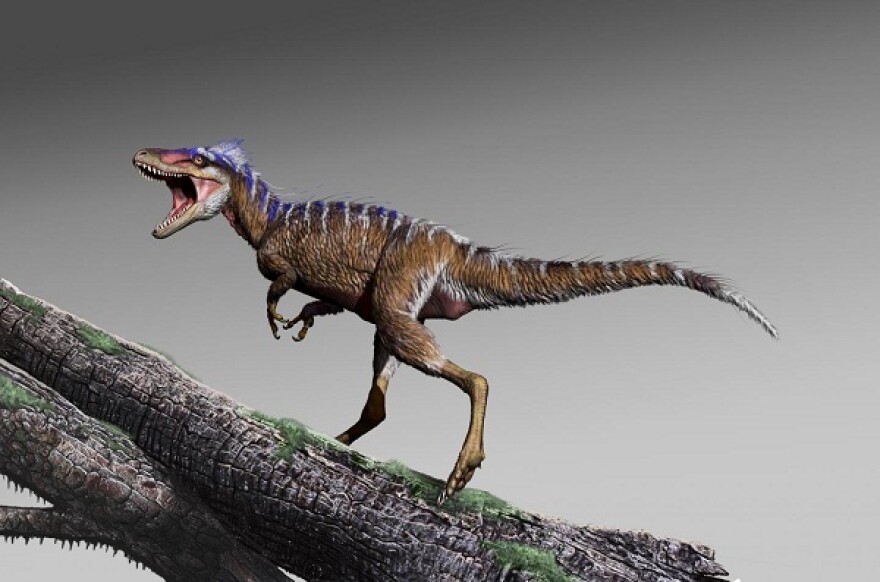Tyrannosaurus Rex is one of the most beloved dinosaurs in American popular culture. But the tyrant king’s background was never entirely clear. A 70 million-year gap in the fossil record had left scientists wondering where the bone-crushing creature came from and how it rose to dominance. A new discovery by researchers at the North Carolina Museum of Natural Sciences and North Carolina State University is helping paleontologists answer that question.
Lindsay Zanno, Head of Paleontology at the North Carolina Museum of Natural Sciences and a biology professor at North Carolina State University, led a team that uncovered pieces of one of T-Rex's predecessors, a much smaller, quicker tyrannosaur she named Moros intrepidus, or “harbinger of doom.” Host Frank Stasio talks with Lindsay Zanno about the discovery and the process of piecing together new species and new theories about how dinosaurs evolved.
Turning up a tiny tyrannosaurus is not something that you do every day.
INTERVIEW HIGHLIGHTS:
On what mysteries Moros intrepidus solves:
Tyrannosaurs sort of appear out of nowhere during the last 15 million years of the Cretaceous [period] leading up to that great mass extinction event that happened at about 66 million years ago. And by the time they show up in the fossil record, they're already these large-bodied predators that are dominating the ecosystems of the day. But that's kind of the final chapter of their story. What we've been missing are the first chapters of how they got to be that way in the first place … We need to fill in that gap. So we know we have a five foot tall Tyrannosaur about 95 million years. And we know we have a 2,000 pound animal just 15 million years later. So how quickly tyrannosaurs went from these tiny animals to taking over that giant predator niche is a gap we still need to fill in.
On piecing together the new species:
That's what's so great about this story for us is that we found this animal in 2012. We found just a few of its leg bones together on the side of the hill. And that process that the public doesn't get to see, about how we got from that discovery moment to figuring out that we had a tiny tyrannosaur, was really long. It was about six years. So it took about two years for conservators at the museum to piece together all the tiny little pieces and reconstruct with this leg looked like. And then several years for me to go through the anatomy and try and figure out what the heck we had actually found, because turning up a tiny tyrannosaurus is not something that you do every day.
On how her team finds fossils:
We have to get on the ground, eyes on the ground out there to find these fossils. There's really no way for us to do that except walking around, hiking around in these Badlands looking for places where the fossils are actually sticking out of the side of the hill. So we go out and we cover, you know, tens of square miles out there looking for new skeletons that might be exposed on the surface … There's a hypothesis behind where we go and why we go there and what we're looking for. But there's also an element of discovery. We find all kinds of other cool things while we're looking to answer that one question, that we never could have expected.



